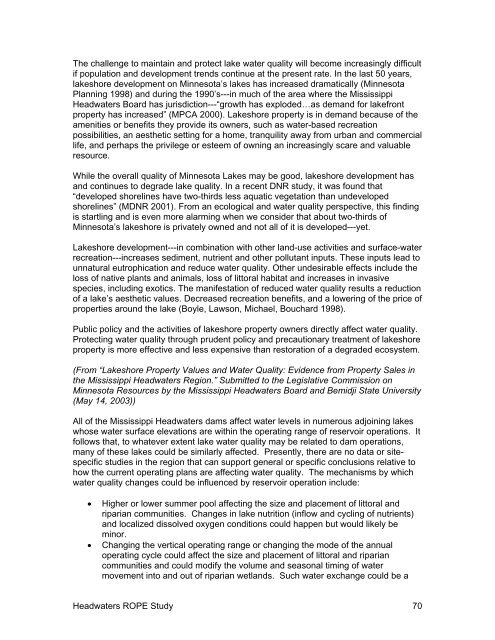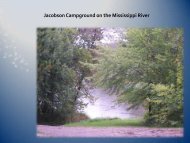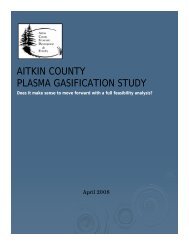Chapter 4: Affected Environment - Aitkin County Government
Chapter 4: Affected Environment - Aitkin County Government
Chapter 4: Affected Environment - Aitkin County Government
- No tags were found...
Create successful ePaper yourself
Turn your PDF publications into a flip-book with our unique Google optimized e-Paper software.
The challenge to maintain and protect lake water quality will become increasingly difficultif population and development trends continue at the present rate. In the last 50 years,lakeshore development on Minnesota’s lakes has increased dramatically (MinnesotaPlanning 1998) and during the 1990’s---in much of the area where the MississippiHeadwaters Board has jurisdiction---“growth has exploded…as demand for lakefrontproperty has increased” (MPCA 2000). Lakeshore property is in demand because of theamenities or benefits they provide its owners, such as water-based recreationpossibilities, an aesthetic setting for a home, tranquility away from urban and commerciallife, and perhaps the privilege or esteem of owning an increasingly scare and valuableresource.While the overall quality of Minnesota Lakes may be good, lakeshore development hasand continues to degrade lake quality. In a recent DNR study, it was found that“developed shorelines have two-thirds less aquatic vegetation than undevelopedshorelines” (MDNR 2001). From an ecological and water quality perspective, this findingis startling and is even more alarming when we consider that about two-thirds ofMinnesota’s lakeshore is privately owned and not all of it is developed---yet.Lakeshore development---in combination with other land-use activities and surface-waterrecreation---increases sediment, nutrient and other pollutant inputs. These inputs lead tounnatural eutrophication and reduce water quality. Other undesirable effects include theloss of native plants and animals, loss of littoral habitat and increases in invasivespecies, including exotics. The manifestation of reduced water quality results a reductionof a lake’s aesthetic values. Decreased recreation benefits, and a lowering of the price ofproperties around the lake (Boyle, Lawson, Michael, Bouchard 1998).Public policy and the activities of lakeshore property owners directly affect water quality.Protecting water quality through prudent policy and precautionary treatment of lakeshoreproperty is more effective and less expensive than restoration of a degraded ecosystem.(From “Lakeshore Property Values and Water Quality: Evidence from Property Sales inthe Mississippi Headwaters Region.” Submitted to the Legislative Commission onMinnesota Resources by the Mississippi Headwaters Board and Bemidji State University(May 14, 2003))All of the Mississippi Headwaters dams affect water levels in numerous adjoining lakeswhose water surface elevations are within the operating range of reservoir operations. Itfollows that, to whatever extent lake water quality may be related to dam operations,many of these lakes could be similarly affected. Presently, there are no data or sitespecificstudies in the region that can support general or specific conclusions relative tohow the current operating plans are affecting water quality. The mechanisms by whichwater quality changes could be influenced by reservoir operation include:• Higher or lower summer pool affecting the size and placement of littoral andriparian communities. Changes in lake nutrition (inflow and cycling of nutrients)and localized dissolved oxygen conditions could happen but would likely beminor.• Changing the vertical operating range or changing the mode of the annualoperating cycle could affect the size and placement of littoral and ripariancommunities and could modify the volume and seasonal timing of watermovement into and out of riparian wetlands. Such water exchange could be aHeadwaters ROPE Study 70








